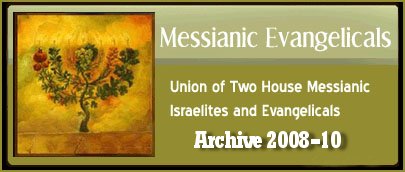RESOURCES
5-144000
A
B
C
D
E
F
G
H
I
J
K
L
M
N
O
P
Q
R
S
T
U
V
W
Y
Z
|
|

|
Third Council of Constantinople (681 AD, Sixth Ecumenical)
Posted by Lev/Christopher on November 8, 2009 at 2:16am
in Christian & MLT Creeds
This council further clarified the Definition of Chalcedon,
dealing with the question of whether the two natures of Jesus
Christ (God and man) had two separate wills as well. The
issue was important because of the existence of the
Monophysite (one nature) heresy, which maintained that Jesus
Christ has only one nature, truncating to some degree His
humanity in favor of His divinity. Some taught that not-
withstanding Jesus' two natures, He had only one will. The
Third Council of Constantinople rejected this view as being
too close to the teaching of the Monophysites. The statement
is an effort to tread the line between the Monophysite and
the Nestorian heresies.
The Statement of Faith of the Third Council of Constantinople
(681 AD, Sixth Ecumenical)
We also proclaim two natural willings or wills in him and two
natural operations, without separation, without change,
without partition, without confusion, according to the
teaching of the holy Fathers -- and two natural wills not
contrary to each other, God forbid, as the impious heretics
have said they would be, but his human will following, and
not resisting or opposing, but rather subject to his divine
and all-powerful will. For it was proper for the will of the
flesh to be moved naturally, yet to be subject to the divine
will, according to the all-wise Athanasius. For as his flesh
is called and is the flesh of God the Word, so also the
natural will of his flesh is called and is God the Word's own
will, as he himself says: "I came down from heaven, not to do
my own will, but the will of the Father who sent me," calling
the will of the flesh his own, as also the flesh had become
his own. For in the same manner that his all-holy and
spotless ensouled flesh, though divinized, was not destroyed,
but remained in its own law and principle also his human
will, divinized, was not destroyed, but rather preserved, as
Gregory the divine says: "His will, as conceived of in his
character as the Saviour, is not contrary to God, being
wholly divinized." We also glorify two natural operations in
the same our Lord Jesus Christ, our true God, without separa-
tion, without change, without partition, without confusion,
that is, a divine operation and a human operation, as the
divine preacher Leo most clearly says: "For each form does
what is proper to it, in communion with the other; the Word,
that is, performing what belongs to the Word, and the flesh
carrying out what belongs to the flesh." We will not
therefore grant the existence of one natural operation of God
and the creature, lest we should either raise up into the
divine nature what is created, or bring down the preeminence
of the divine nature into the place suitable for things that
are made. For we recognize the wonders and the sufferings as
of one and the same person], according to the difference of
the natures of which he is and in which he has his being, as
the eloquent Cyril said.
Preserving therefore in every way the unconfused and
undivided, we set forth the whole confession in brief;
believing our Lord Jesus Christ, our true God, to be one of
the holy Trinity even after the taking of flesh, we declare
that his two natures shine forth in his one hypostasis, in
which he displayed both the wonders and the sufferings
through the whole course of his dispensation, not in phantasm
but truly, the difference of nature being recognized in the
same one hypostasis by the fact that each nature wills and
works what is proper to it, in communion with the other. On
this principle we glorify two natural wills and operations
combining with each other for the salvation of the human
race.
The Image Controversy (the Iconoclasts)
At the beginning of the 8th century, Leo III, emperor of the
Eastern Roman empire, attacked the use of images as aids in
worship. As such, he was the first leader of the iconoclasts
(image breakers). Statues and icons of Jesus, Mary, and
various other holy men and women were being used as aids in
worship, and many ordinary Christians were failing to
distinguish between the spiritual reality represented by the
image and the image itself. Leo III came into power after a
series of military defeats. There was also a major
earthquake at the beginning of his reign. Some scholars have
speculated the Leo launched his attack on the use of images
because he felt that these disasters were the result of God's
judgement. Other scholars think that he might have yielded
to pressure from Jews and Muslims who stated that Christians
were no longer obeying the commandment against idolatry. In
any case, Leo III and successors for the next century or so
fought against the use of images in worship. In 753,
Constantine V, Leo's son, called a synod at which a gathering
of 338 bishops produced the statement below:
The Synod of Constantinople (Hiera, 753 AD)
When, however, they are blamed for undertaking to depict the
divine nature of Christ, which should not be depicted, they
take refuge in the excuse: We represent only the flesh of
Christ which we have seen and handled. But that is a
Nestorian error. For it should be considered that that flesh
was also the flesh of God the Word, without any separation,
perfectly assumed by the divine nature and made wholly
divine. How could it now be separated and represented apart?
So is it with the human soul of Christ which mediates between
the Godhead of the Son and the dullness of the flesh. As the
human flesh is at the same time flesh of God the Word, so is
the human soul also soul of God the Word, and both at the
same time, the soul being deified as well as the body, and
the Godhead remained undivided even in the separation of the
soul from the body in his voluntary passion. For where the
soul of Christ is, there is also his Godhead; and where the
body of Christ is, there too is his Godhead. If then in his
passion the divinity remained inseparable from these, how do
the fools venture to separate the flesh from the Godhead, and
represent it by itself as the image of a mere man? They fall
into the abyss of impiety, since they separate the flesh from
the Godhead, ascribe to it a subsistence of its own, a per-
sonality of its own, which they depict, and thus introduce a
fourth person into the Trinity. Moreover, they represent as
not being made divine, that which has been made divine by
being assumed by the Godhead. Whoever, then, makes an image
of Christ, either depicts the Godhead which cannot be de-
picted, and mingles it with the manhood (like the Mono-
physites), or he represents the body of Christ as not made
divine and separate and as a person apart, like the
Nestorians.
The only admissible figure of the humanity of Christ, how-
ever, is bread and wine in the holy Supper. This and no
other form, this and no other type, has he chosen to
represent his incarnation . . .
Thirty-five years later, Irene, the regent for Constantine
VI, called another council at which 350 bishops repudiated
the decision documented above. The result of their
deliberations is given below:
Council of Nicaea (7th Ecumenical,787 AD)
To make our confession short, we keep unchanged all the
ecclesiastical traditions handed down to us, whether in
writing or verbally, one of which is the making of pictorial
representations, agreeable to the history of the preaching of
the Gospel, a tradition useful in many respects, but
especially in this, that so the incarnation of the Word of
God is shown forth as real and not merely fantastic, for
these have mutual indications and without doubt have also
mutual significations.
We, therefore, following the royal pathway and the divinely
inspired authority of our Holy Fathers and the traditions of
the Catholic Church (for, as we all know, eth Holy Spirit
indwells her), define with all certitude and accuracy that
just as the figure of the precious and life-giving Cross, so
also the venerable and holy images, as well in painting and
mosaic as of other fit materials, should be set forth in the
holy churches of God, and on the sacred vessels and on the
vestments and on hangings and in pictures both in houses and
by the wayside, to wit, the figure of our Lord God and
Saviour Jesus Christ, of our spotless Lady, the Mother of
God, of the honourable Angels, of all Saints and of all pious
people. For by so much more frequently as they are seen in
artistic representation, by so much more readily are men
lifted up to the memory of their prototypes, and to a longing
after them; and to these should be given due salutation and
honorable reverence not indeed that true worship of faith
which pertains alone to the divine nature; but to these, as
to the figure of the precious and life-giving Cross and to
the Book of the Gospels and to the other holy objects,
incense and lights may be offered according to ancient pious
custom. For the honor which is paid to the image passes on
to that which the image represents, and he who reveres the
image reveres in it the subject represented . . .
I have included these two documents to show that the debate
over the use of images in worship is not new; that it is, in
fact, part of an ongoing debate over what is to be wor-
shipped. The sources which I have examined (these are,
admittedly, works by protestant authors), indicated that
there were various branches of the church which opposed or
supported the iconoclast position to varying degrees, and
that the documents produced by the iconoclasts of the 8th and
9th centuries were the basis of the position taken by the
reformers in the 16th century.
http://www.iclnet.org/pub/resources/text/history/creeds.later.txt
|


This page was created on 5 May 2010
Updated on 5 May 2010
Copyright © 1987-2010 NCCG - All Rights Reserved
|
|


